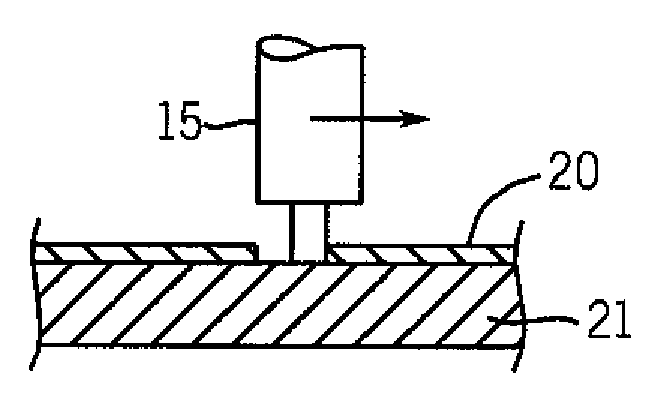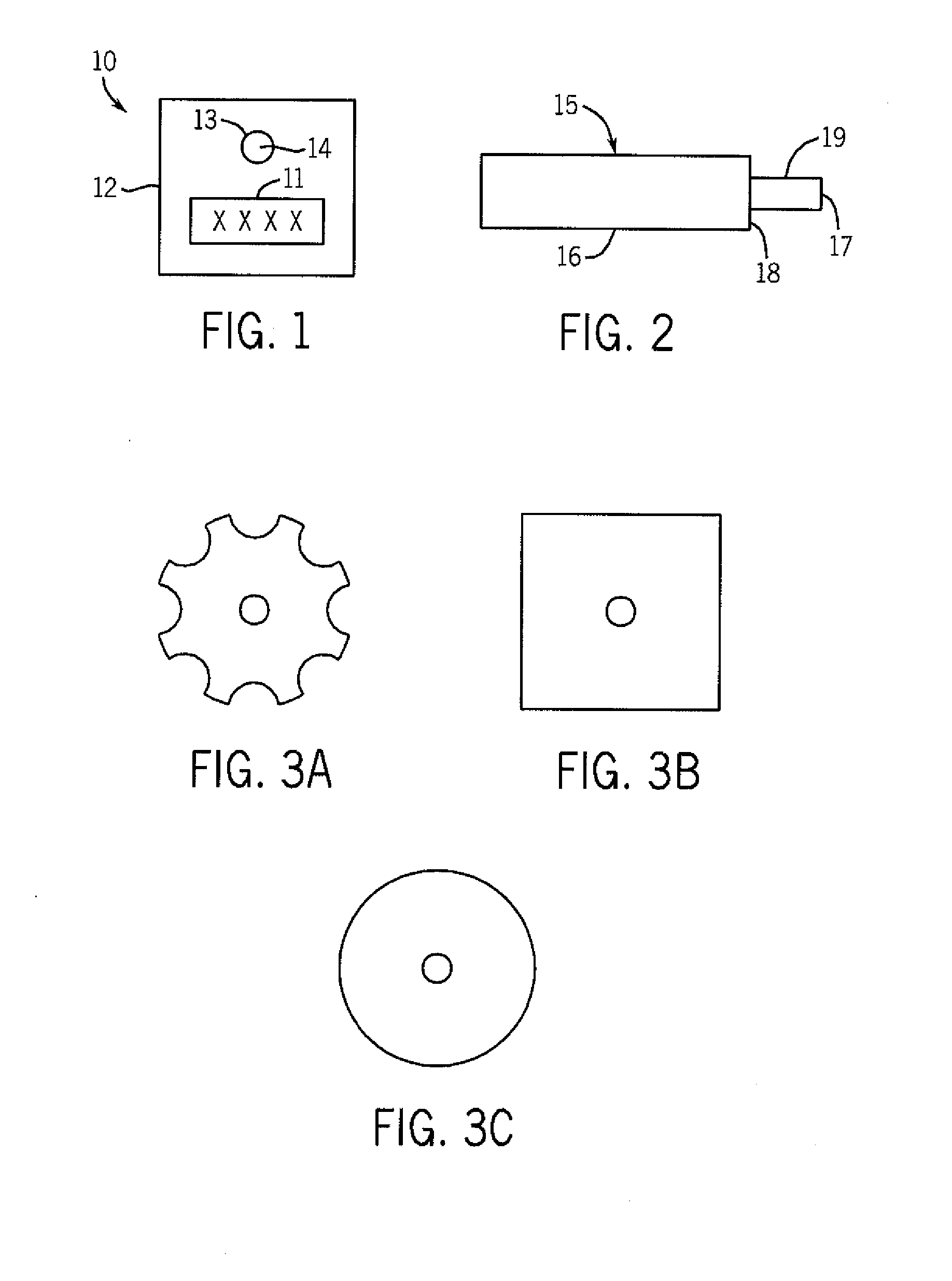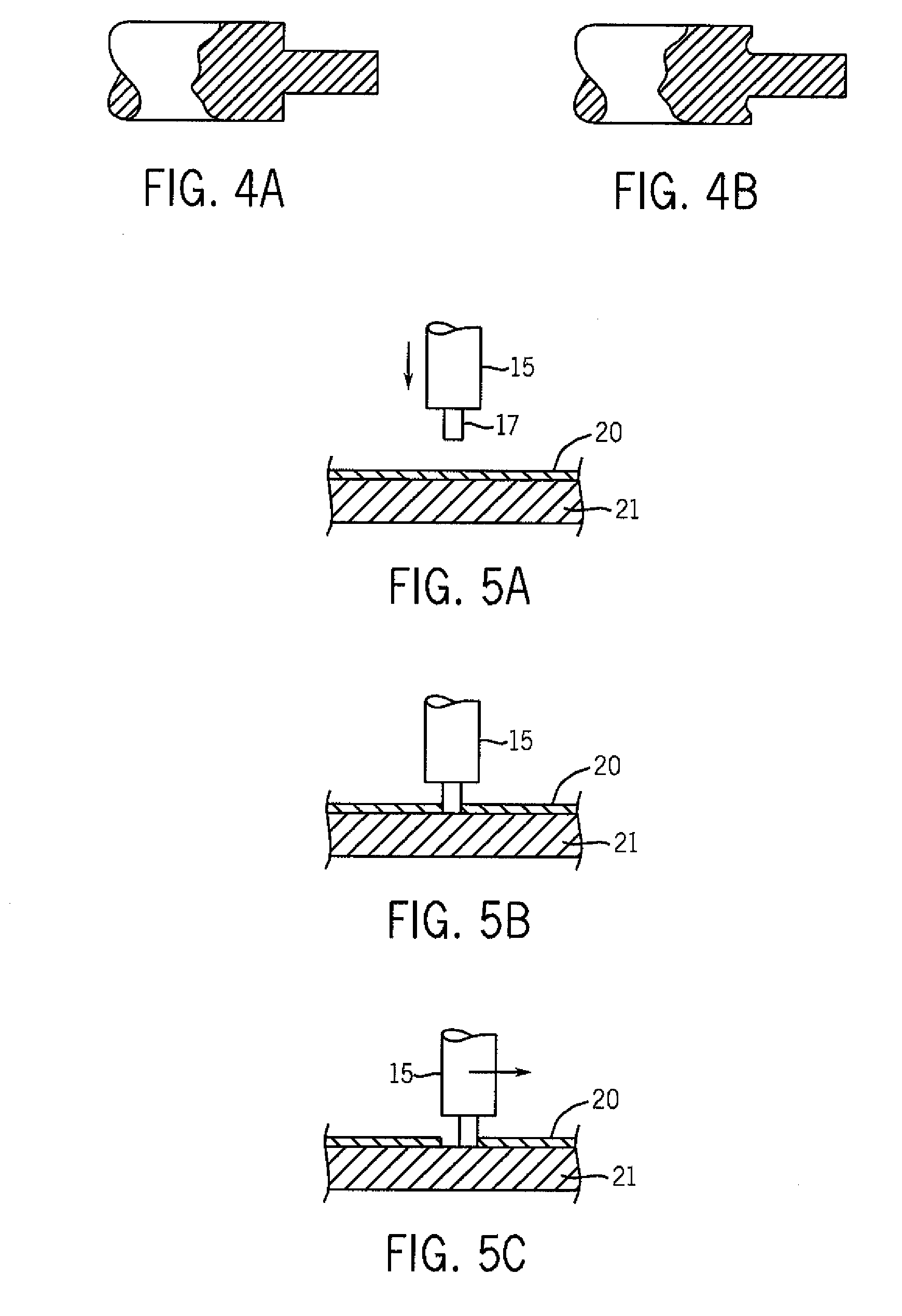Method of Attaching a Label to a Thermoplastic Substrate
a thermoplastic substrate and label technology, applied in the field of labels, can solve the problems of psa losing its ability to bind the label to the object, the process can last for hours, and the use of harsh environments
- Summary
- Abstract
- Description
- Claims
- Application Information
AI Technical Summary
Benefits of technology
Problems solved by technology
Method used
Image
Examples
Embodiment Construction
[0032]Any label that can withstand the conditions of the environment in which it will be used can be used in the practice of this invention. The labels can be of any size and shape, and they may contain pre-formed holes for use in attachment to the substrate, particularly if the label is made from a material with a melting point substantially different from the thermoplastic substrate to which the label will be attached. If such holes are present, the holes can be of any convenient size, shape and placement, and can be formed in any convenient manner, e.g., punching, molding, etc. FIG. 1 illustrates a label with a pre-formed hole. In this particular embodiment, label 10 has a generally rectangular shape and it bears information 11. Label 10 comprises continuous external edge 12 which defines the size and generally rectangular shape of label 10, and continuous internal edge 13 which defines the size and generally circular shape of hole 14.
[0033]Materials from which the substrate laye...
PUM
| Property | Measurement | Unit |
|---|---|---|
| Sensitivity | aaaaa | aaaaa |
| Thermoplasticity | aaaaa | aaaaa |
Abstract
Description
Claims
Application Information
 Login to View More
Login to View More - R&D
- Intellectual Property
- Life Sciences
- Materials
- Tech Scout
- Unparalleled Data Quality
- Higher Quality Content
- 60% Fewer Hallucinations
Browse by: Latest US Patents, China's latest patents, Technical Efficacy Thesaurus, Application Domain, Technology Topic, Popular Technical Reports.
© 2025 PatSnap. All rights reserved.Legal|Privacy policy|Modern Slavery Act Transparency Statement|Sitemap|About US| Contact US: help@patsnap.com



